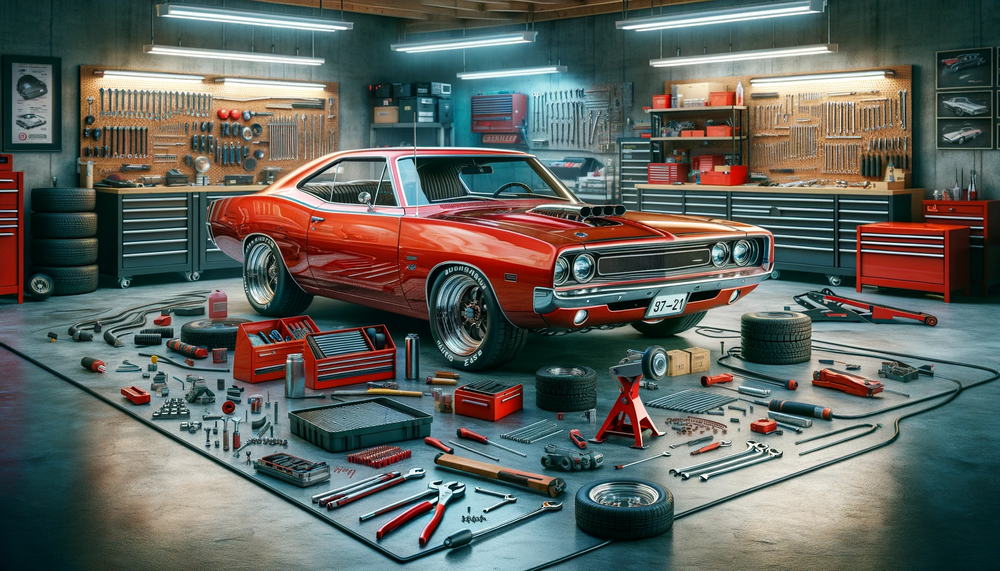Achieving Acoustic Bliss: The Ultimate Guide to Sound Deadening in Classic Cars
Classic cars have a unique charm and appeal, transporting drivers back to a different era and evoking a sense of nostalgia. However, as captivating as driving a classic car can be, it's essential not to overlook the driving comfort of both the driver and passengers.
One of the most significant drawbacks of older vehicles is the absence of modern noise reduction technologies, resulting in a driving experience often marred by excessive noise and vibrations. But, by incorporating cutting-edge sound deadening solutions, you can transform your vintage vehicle into a quiet and comfortable haven, perfectly blending classic allure with contemporary comfort.
Noise control in classic cars is crucial due to the lack of advanced noise reduction features present in modern vehicles. Older automobiles are more prone to increased road noise, vibrations, and rattles simply because their design and build materials are from a less sophisticated time. Utilizing modern sound deadening materials, classic car owners can bridge the gap between old and new, elevating their driving experience to a level that rivals the serenity of contemporary automobiles.
Unique Challenges of Noise Management in Classic Cars
While every vehicle can benefit from sound deadening solutions, classic cars present their own unique set of challenges when it comes to noise management. Understanding these challenges will help create a targeted and effective approach to improving the comfort of your vintage ride.
1. Outdated Design and Technology
Unlike modern vehicles that often incorporate noise-engineered components and materials, classic cars were designed in an era with less emphasis on creating a noise-free interior. As a result, older vehicles are prone to a higher level of noise from the engine, suspension, and external elements.
2. Age-Related Deterioration
Time can take a toll on the materials in classic cars, making them more susceptible to vibrations, rattles, and increased noise. The structural integrity of doors, windows, and other components can degrade, leading to an overall increase in cabin noise.
3. Limited Access to OEM Components
When trying to restore a classic car, finding original replacement parts can be a challenge. Even when obtainable, these older components often lack the noise reduction features found in contemporary parts.
Identifying Noise Problem Areas in Your Classic Car
Before selecting and installing sound deadening solutions, it's essential to identify the primary noise issues in your classic vehicle:
1. Engine and Mechanical Noise
If the engine or other mechanical components, like the exhaust system, are the predominant noise sources, focus your sound deadening efforts on the firewall, floor, and under-hood areas.
2. Road and Tire Noise
Should road noise generated by tires, suspension, or aerodynamics be the most significant issue, target the door panels, roof, and floor for your sound deadening treatment.
3. Panel Vibrations and Rattles
Loose or vibrating panels and components contribute to cabin noise, particularly in older vehicles. Zero in on door panels, floor, trunk, and other areas where vibrations or rattles may be originating.
Selecting Sound Deadening Solutions for Classic Cars
To tackle these unique challenges, it's crucial to choose the right sound deadening materials specifically designed for older vehicles:
1. Butyl-Based Mats
High-quality butyl-based mats are an excellent choice for most classic cars. They provide substantial vibration damping and noise reduction and can be easily cut, shaped, and installed on various surfaces.
2. Mass Loaded Vinyl Barriers
A thin but heavy layer of mass loaded vinyl creates a sound-blocking barrier, effectively sealing out road noise. This type of barrier is especially useful for door panels, floor, and trunk areas of classic cars.
3. Heat-Resistant Insulating Materials
Some classic cars can generate more heat in the cabin, making insulation with heat-resistant properties a valuable addition. Choose materials like closed-cell foam or foil-faced insulation for this purpose.
Installing Sound Deadening Solutions in Your Classic Car
Once the best solutions have been identified, it's time to install them in your vehicle:
Step 1: Clean and Prepare Surfaces
For optimal performance and adhesion, thoroughly clean all surfaces where sound deadening materials will be installed. Remove any grease, dirt, or debris.
Step 2: Measure, Cut, and Apply the Materials
Take accurate measurements of the areas where the materials will be applied. Cut the sound deadening solutions according to these measurements and apply them following the manufacturer's instructions.
Step 3: Reassemble and Inspect the Vehicle
Ensure that every treated area is adequately sealed, and reinstall any previously removed components. Evaluate your classic car's noise level to ensure the sound deadening solutions have had the desired effect.
Turning Silence Into Style: How Sound Deadening Boosts Comfort in Classic Cars
Classic cars can be a source of immense joy and admiration for owners and enthusiasts alike. By equipping your timeless vehicle with modern sound deadening solutions from B-Quiet, you can enjoy the charm and appeal of yesteryear's automobiles without sacrificing today's driving comfort. Get ready to hit the open road, relish in the nostalgia of your classic car, and experience the tranquility offered by our premium sound deadening materials.













